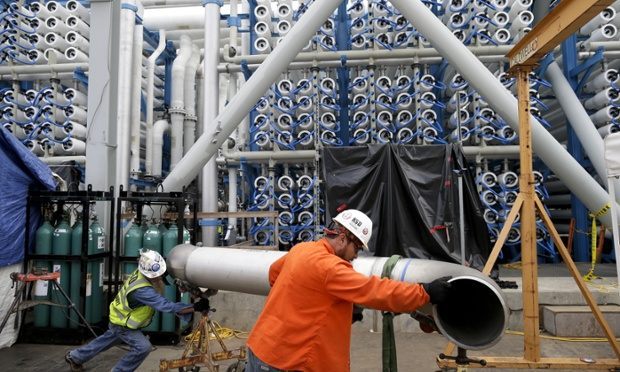As Carlsbad’s $1 billion desalination plant is about to go online in the next 30 days, residents can look forward to paying for huge water subsidies to a private company for the next 30 years.
California is the “mother lode” for residents paying “sustainable” utility subsidies. Solar power plants regularly receive up to 200 percent subsidies. Moreover, as Breitbart News reported, a 300 percent subsidy is being proposed for an offshore wind farm near the Hearst Castle.
Steep subsidies explain why California residents, despite living in a huge oil and gas producing state, pay 13.50 cents per kilowatt hour (KWh) for electricity. That compares to neighboring residents in energy-barren Nevada, with few subsidies, who only pay 8.95 cents per KWh for electricity.
Carlsbad’s Poseidon Desalination Project negotiated a 30-year contract with San Diego’s publicly-owned water utility to convert 56 million gallons of seawater each day into drinking water on a take-or-pay basis.
Although it took the company 15 years and they had to survive 14 legal challenges to bring the environmentally controversial plant online, Poseidon looks to be wildly profitable by selling desalinated water to the San Diego Water Authority at the $2,257 per acre-foot. That rate is almost three times the $800 cost per acre-foot the water district pays for San Joaquin Delta water, according to The Atlantic.
Poseidon Water vice president Peter MacLaggan has described Poseidon’s plant technology as “effectively where the magic happens.”
But the desalination plant is using 16,000 reverse-osmosis tubular membranes to filter the seawater. The “technology” was invented in California in the 1950s. Arid communities in Israel, Australia and Saudi Arabia have built dozens of such expensive projects over the past few years.
Poseidon promises to “advance the goals of the Coastal Act to maintain, restore and enhance public access and recreation and maintain, restore and enhance the marine environment through the dedication of more than 15 acres of lagoon and ocean front land for public purposes.” But the plant’s cold-water intake pipes will kill 100% of all marine life sucked into the plant, and create a potentially toxic brine discharge plume that can further harm fish and other marine life.
The U.S. has a history of launching desalination plants that turned out to be a disaster. During the California drought in the 1980s, the city of Santa Barbara built, but never operated, a desalination plant because it was too expensive to run.
In the early 2000s, Tampa Bay Seawater Desalination facility, owned by the public Florida Water Authority, spent $108 million on a plant that bankrupted the builder and rarely run at full capacity because of high costs.
In southern Arizona along the U.S.-Mexico border, the federal government spent $286 million on the Yuma Desalting Plant that promised to deliver 92 million gallons of clean water a day. The project seldom operates and costs $9 million in reverse-osmosis membranes each time it is turned on.
There are currently 27 proposed desalination projects along California’s coast. Poseidon announced on October 27 that it will apply in the next month or two for a permit to build a desalination plant in Huntington Beach.

COMMENTS
Please let us know if you're having issues with commenting.